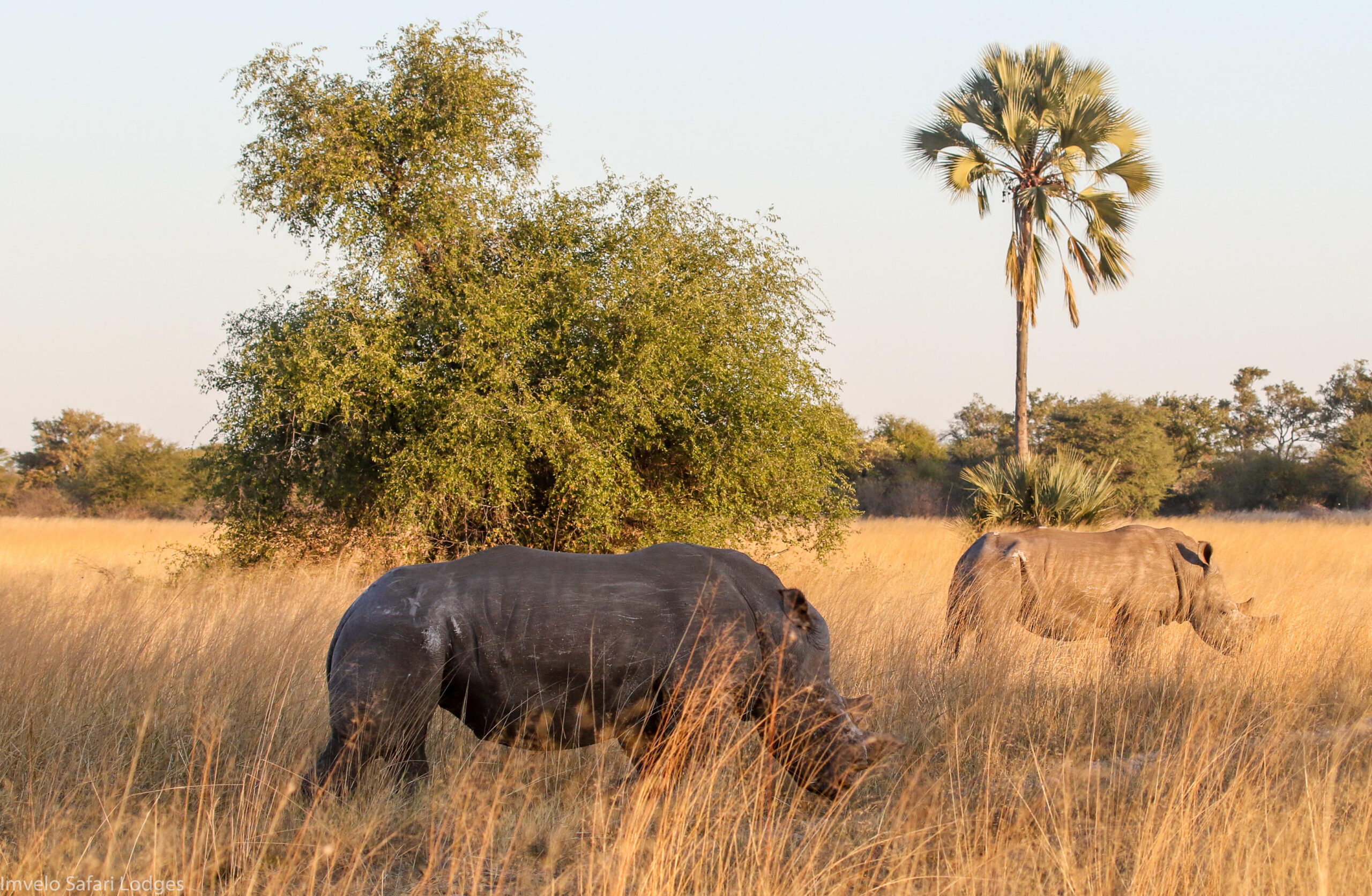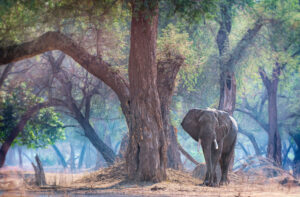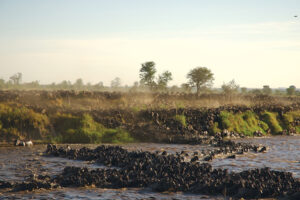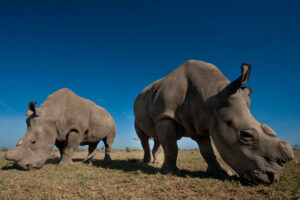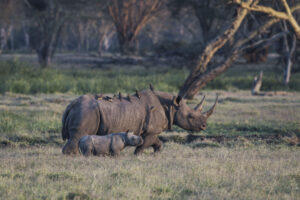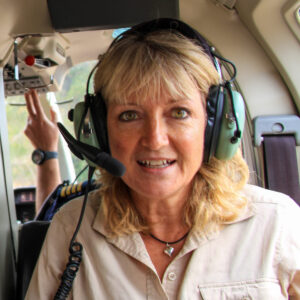
Guests at Camelthorn Lodge in Hwange, in north-western Zimbabwe, shouldn’t be surprised to see a couple of rather special rhinos sauntering around outside their villa. Called Thuza and Kusasa, the white rhinos were the first to be reintroduced to the Hwange area two years ago, and Camelthorn lies in the middle of Ngamo, the rhino sanctuary which is now their home.
And last month, Thuza and Kusasa were joined by Mlevu and Asenze, two bull rhinos. Like Thuza and Kusasa, they travelled overnight across Zimbabwe, all the way from Malilangwe Wildlife Reserve in south-eastern Zimbabwe, in the company of expert ecologists, vets and rangers, to be greeted by hundreds of children and villagers excited to welcome their new neighbours.
Pioneering rhinos
Thuza and Kusasa were the pioneers for Imvelo’s Community Rhino Conservation Initiative (CRCI). The bigger picture is a bold plan to create multiple small rhino sanctuaries along the borders of Hwange which will eventually form one highly protected conservancy of 30-50 rhinos, simultaneously becoming a fenced buffer zone for people living beside the park suffering extreme human-wildlife conflict.
Thuza and Kusasa were settled in the Ngamo sanctuary, while Mlevu and Asenze are populating the new Mlevu sanctuary nearby.
Mlevu and Asenze were specially chosen by Malilangwe’s ecologists as the next two rhinos to be relocated. Both eight years old, they are “friends” and would often be seen together when monitored. Asenze means “let’s do” in the local Ndebele language, signifying the communities’ commitment to the project, and Mlevu is named after the Ward Headman, Baba Mlevu, the influential 90-year-old who has strongly supported this initiative from the outset.
“When I was small, I always used to see rhinos in Hwange and I want to see them again before I die,” he said. “I want this to be my legacy for my people.”
Creating sanctuaries in the community
In a win-win conservation initiative that has communities at its heart, local farmers gave up cattle-grazing pastures in Tsholotsho bordering Hwange National Park (where the species was poached out 20 years ago) to create the pioneering Ngamo sanctuary, the first in Zimbabwe to have rhinos permitted on communal lands.
“These rhinos will change our villages forever,” Imvelo’s ZimPro guide Vusa Ncube said. And he was right. Thuza and Kusasa have already brought employment, tourism dollars and invaluable benefits to the community.
Since Thuza and Kusasa arrived in 2022, over 2,000 international guests and some 1,500 locals, including children, have visited and are guaranteed good sightings: the precious rhinos are guarded 24/7 by the Cobras Community Wildlife Protection scouts, all from local villages and trained to British military standards. And the money raised from these visits helps fund the Ngamo Health Clinic, benefitting thousands of people.
Inspired by the benefits flowing from these first two rhinos, three more communities dedicated some of their lands to rhino conservation.
To see these rhinos and the people who live alongside them, whether they’re the scouts, farmers, schoolchildren or guides from Imvelo, is to see a joyous blending of communities and conservation being played out before you, full of commitment and hope for the future.
And Mr Mlevu will be happy to know that planning for the third sanctuary is already underway.
Hwange National Park has a lot to offer in addition to seeing white rhinos! If you’d like to find out more, speak to one of the specialists at Expert Africa to plan your Zimbabwe adventure.
